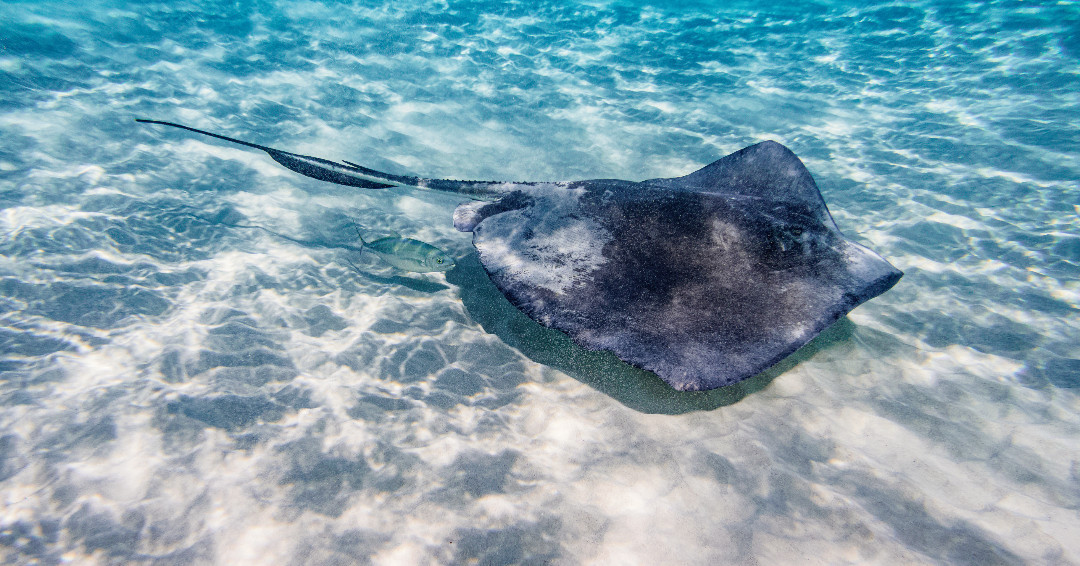Summary:
1. The stingray is a fascinating and unique creature commonly found in sandy areas, seagrass meadows, lagoons, and small reefs.
2. During the day, these stingrays are often buried in the sand, while at night, they come out to hunt various marine organisms.
3. Their prey includes bony bottom-dwelling fishes, crabs, worms, clams, and shrimp.
4. Stingrays have a unique way of hunting and capturing their prey, using their flat bodies and specialized mouthparts.
5. Despite their intimidating appearance, stingrays are not aggressive and usually prefer to avoid human interaction.
The Mysterious World of Stingrays: Unveiling their Secret Lives
Welcome to the enchanting world of stingrays, where sandy areas, seagrass meadows, lagoons, and small reefs are their playgrounds. These fascinating creatures possess numerous unique qualities that make them an intriguing subject of study. Today, we will explore stingrays’ captivating aspects and delve into their daily life secrets.
1. Master of Camouflage:
As the sun reaches its zenith and the heat intensifies, stingrays seek solace under the sands below. With their incredible ability to blend seamlessly into their surroundings, they bury themselves using their muscular pectoral fins, leaving only their mesmerizing eyes partly exposed. Their sand-colored skin is natural camouflage, protecting against predators and allowing them to patiently wait for their preferred nocturnal hunting time.
2. Nighttime Predators:
As darkness descends, the stingrays emerge from their sandy burrows, transforming into stealthy hunters. Their foraging expeditions take them through the seafloor, targeting bony bottom-dwelling fishes, crabs, worms, clams, and shrimp. These delectable morsels become their prey, and the stingrays employ their unique feeding strategy to easily capture them.
Equipped with venomous spines near the base of their whip-like tails, stingrays rely on their swift strikes, immobilizing unsuspecting prey. Once subdued, their flat bodies facilitate suctioning and swallowing these delicacies whole, further establishing their prowess as masterful hunters of the marine world.
3. Marvels of Mobility:
While such peculiar feeding habits are undoubtedly impressive, stingrays also showcase exceptional maneuvering skills. Despite their seemingly cumbersome appearance, these graceful creatures glide effortlessly through the water, aided by the undulating movements of their pectoral fins. This graceful agility allows them to gracefully navigate through seagrass meadows, lagoons, and even small reefs, making them highly adaptable to various environments.
4. Solitary Creatures:
Stingrays are predominantly solitary creatures, favoring a solitary life within their chosen habitats. Unlike other social marine animals, they prefer the tranquility of solitude, only gathering during mating seasons when males seek out females through elaborate courtship displays. These elegant rituals involve synchronized swimming and breathtaking acrobatics, captivating observers fortunate enough to witness these awe-inspiring displays of affection.
5. Gentle Giants:
While stingrays may evoke a sense of fear due to their menacing appearance, it is crucial to understand that they are generally harmless unless provoked. They possess a predominantly peaceful disposition and actively avoid human interaction. These incredible creatures understand that their barbed tails, designed for defense, are best reserved for dire situations, not for unwarranted aggression toward humans.
As the sun sets on our exploration of the enigmatic world of stingrays, we are left in awe of their captivating existence. Stingrays embody nature’s genius in its purest form, from their camouflage techniques and meticulous hunting strategies to their graceful movements and solitary lifestyles. It is a privilege to witness these creatures in their natural habitats and a reminder of the intricate web of life beneath the ocean’s surface. Let’s cherish and protect these unique creatures, ensuring future generations can continue to marvel at the wondrous world of stingrays.
*****
Source Description
It is common in sandy areas, seagrass meadows, lagoons and small reefs. During the day, this stingray often stays buried in the sand. It will come out to hunt bony bottom-dwelling fishes, crabs, worms, clams, and shrimp at night.


